|
|
 |
January 18th, 2013
Location of The Kingsbury Colombo
The Kingsbury Colombo [formerly Ceylon Continental] is located in the heart of the city called Fort: at the northern end of the Galle Face Green in the immediate backdrop of the Indian Ocean to the west and Hotel Galadari Colombo and Hotel Hilton Colombo immediate to the east. Immediately to the north of Kingsbury Colombo is the Central Bank of Sri Lanka, the banker to the state.

Setting of The Kingsbury Colombo
The Kingsbury Colombo stands majestically on a strip of land nesting between the Colombo Fort marine drive called Chaithiya Road [Sinhala: Stupa Road] and the Colombo Galle A2 main road [CGHW] that connect to the Janadhipathi Mawata [Sinhala: President’s Avenue] [called Queen’s Street during the British Colonial times].
Sri Lanka Holidays Sustainable tourism (Green i.e., eco) credentials of The Kingsbury Colombo: to be edited.
Type of hotel & star rating of The Kingsbury Colombo: a five-star luxury hotel
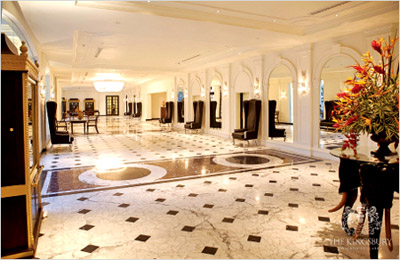
Architecture and Interior Décor of The Kingsbury Colombo
Colonial grandeur blended with luxuries of twenty first century living.
Accommodation at The Kingsbury Colombo
One Presidential suite, 21 suites & 207 luxurious bedrooms (Superior, Deluxe, Premium and Executive Rooms)
The views from the rooms at feature Galle Face Green or the Colombo harbor and Indian Ocean.
The rooms have views of the Galle Face green or the Colombo harbour and the Indian Ocean. The room interiors blends classic charm with contemporary living and are furnished with twin or king-size beds.
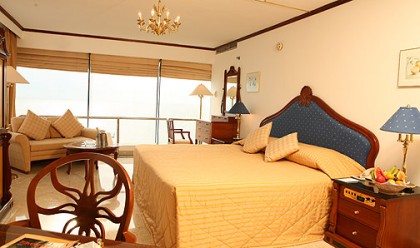
In-room facilities at The Kingsbury Colombo
All rooms of The Kingsbury Colombo are furnished twin or king-size beds
a/c, overhead fans, LCD TV with satellite channels, IDD telephone, tea/coffee facility
wi-fi internet, digital safe, room service and laundry service.
En-suite white marble bathrooms are equipped with hot water and cold water showers.
In house facilities at The Kingsbury Colombo
Ballrooms: The Balmoral, The Victorian and The Winchester.
Other hotel facilities include a swimming pool, fully equipped fitness centre, spa offering relaxing massages and beauty treatments, business centre and banquet facilities.
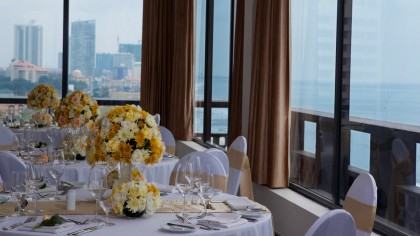
Restaurants and bars at The Kingsbury Colombo
The Ocean (world cuisine: an all day restaurant serving international cuisine for breakfast, lunch and dinner
Yue Chuan (Chinese): serves up Cantonese and Szechuan dishes
Fisherman’s Wharf: seafood specialties
The Gourmet Station: specialty teas brewed of Ceylon Tea, the finest Black Tea in the world, chocolates, cakes and pastries.
The King’s Pub, the lobby bar: a range of alcoholic beverages.
Excursions within Colombo district
Kaleniya Royal Temple at the city of Kaleniya, located 11km east of Fort, Colombo
Seemamalaka and Gangaramaya temple located 3 km south of Fort, Colombo on the eastern bank of Beira Wewa [Sinhala: Beira Lake]
Bellanwila Raja Maha Vihara [Sinhala: Bellanwila Royal Buddhist temple] at Bellanwila, off Dehiwale, 14km south of Fort, Colombo and 5km east of Sri Lanka Holidays Mount Lavinia.
Tags: Colombo, Sri Lanka Holidays
Posted in Colombo | No Comments »
December 28th, 2012
Can I get you anything? Coffee? Tea? Me? Working Girl (1988): Harrison Ford, Melanie Griffith

The beverages Black Tea , Green Tea & Oolong Tea are products of the leaf of Evergreen shrub Camellia sinensis, family Theaceae. Slight variations in the manufacturing process have resulted in our need to identify these beverages specifically. Among the numerous factors instrumental in the popularity of tea was its ability to retain the manifold qualities of the fresh leaves even in the dried form. But it was not only dried Black Tea that first traveled out of China: seeds too were taken to Japan. Though tea was brought into Japan as early as AD 593 by the Japanese Buddhist priests, it was the seeds planted in the Kyoto temple of Japan by the Japanese Zen Buddhist priest Myoan Eisai (AD1141- 1215) that popularized Tea as a beverage in Japan.
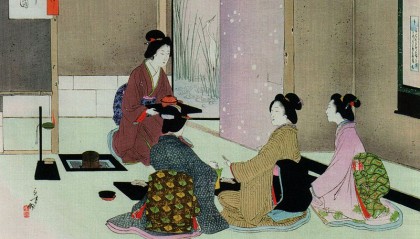
Tea takes root in Japan: Tea with Zen
Eisai’s association of Black Tea with Zen Buddhist meditation coupled with imperial contributions towards the cultivation of tea paved the way for the phenomenal popularity of tea in Japan. Having established its status as the national drink of Japan, Black Tea quickly found its place in the spiritual aspect of the Japanese society too. Making & serving tea was elevated into an art form called “Tea Ceremony”. While there are numerous ways in which the tea ceremony is conducted, some of them such as night tea, sunrise tea, evening tea, morning tea, and afternoon tea are firmly established.
Quote Irish-Greek journalist-historian Patrick Lafcadio Hearn (1850-1904), also known as Koizumi Yakumo, one of the few foreigners ever to be granted Japanese citizenship during this era. “The Tea ceremony requires years of training and practice to graduate in art…yet the whole of this art, as to its detail, signifies no more than the making and serving of a cup of tea. The supremely important matter is that the act be performed in the most perfect, most polite, most graceful, most charming manner possible”. Unquote
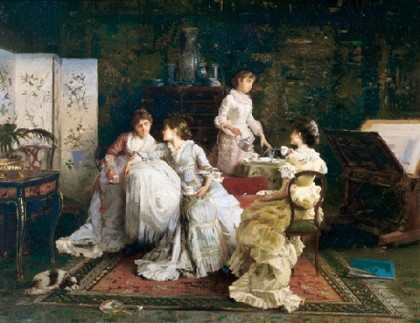
Black Tea finds a sea-route China to Europe
In 1517, Portuguese seafarers presented their king with a gift of tea brought from China. However, it took almost another hundred years for the Europe to receive a substantial consignment of Tea by way of Dutch ships returning from China. Although Tea was introduced to England, France & Holland in 1600s, the beverage was used basically as a herbal medicine. During the 18th century, most possibly owing to the availability of Caribbean cane sugar at affordable prices, tea established its rightful place among the finest beverages of the world.
Black Tea extends a timely hand towards industrialization
Quote: The World That Trade Created: Society, Culture and the World Economy, 1400 to the Present by Kenneth Pomeranz, Steven Topik
And changes in social life no doubt mattered, too. More & more artisans came to labor in workshops (or in some cases, early factories) separate from their homes; work hours became more regimented, & going home at midday for a long lunch less likely. In such a setting, short breaks that provided a shot of caffeine & sugar became an important part of work routines. And even if these early stirring of industrialization did not quite cause the taste for tea, they certainly benefited from it. Tea, after all, replaced gin & beer as the national drinks in England-early factories were dangerous enough as it was without stupefied workers fumbling about their duties. Had tea & sugar not replaced alcohol as the country’s principal cheap drink & source of supplementary calories), the situation could have been far grimmer yet. Unquote
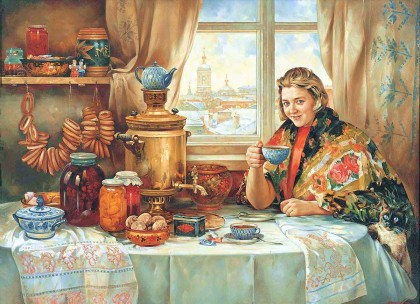 Russian tea drinking tradition: samovar,pancakes, jam, cubed sugar, sliced lemon, porcelain set Tea takes the land route from China to Russia
If the sea voyage from China to Europe was long & treacherous, the land route from China to Russia was no better either. The 16 month journey to & from Moscow consisted of roughly 11,000 miles of barren and mountainous terrain. The first few parcels of dried Black Tea leaves were brought to Russia by Russian Ambassador to China Vasily Starlove in 1638. Though the qualities of Black Tea were appreciated in no time, it was only in 1769 that Russians made a trade agreement with China for the delivery of Black Tea. That was following a gift of Black Tea from China brought in by Russian Ambassador to China Ivan Perfiliev. The long journey from China to Russia having raised the cost of Black Tea, the beverage had remained a luxury item in Russia. However, by the end of the 1700s, Black Tea became an affordable commodity to the Russian peasants.
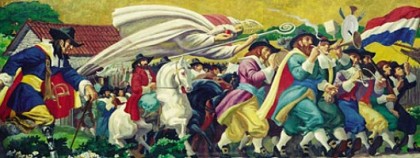 Lumen Martin Winter, Peter Stuyvesant’s Legion Oil on canvas, 30 in. x 80 in. 1953, Jacob Ruppert Brewery Tea arrives in the new World
Peter Stuyvesant (1612-1672), the fourth and last Director-General of New Netherlands (1646-1664) is credited with introducing tea to the New World in 1650. The settlers of New Amsterdam (later renamed New York by the English) were known to consume more tea then, than all of England put together. American love affair with Black Tea lasted for 124 years to take a swift turn in the history of the world, if not precisely the history of tea.
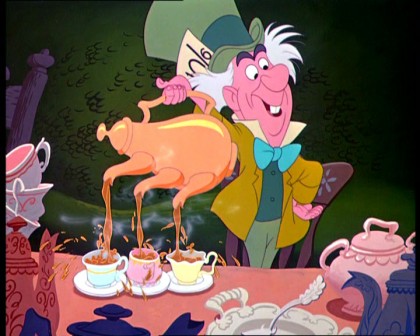 John Tenniel's original illustration of the Mad Hatter's Tea Party by kind courtesy of Disney The Mad Hatter’s Tea Party
In 1774 tea parties were hosted in Philadelphia, New York, Maine, North Carolina, and Maryland. And those were tea parties like no other. In Boston alone, 45 tons of tea brought in by East India Company was unloaded to the waters of the Boston harbor by Sons of Liberty disguised as Native Americans. There was a method in the madness of the mad hatter’s tea party: no ships were damaged. It was the Crown’s tax against Black Tea, a staple of colonial life that spurred the colonists to revolt. Boston Tea Party leading to the American Revolutionary War, the colonists were destined to become the most powerful nation of the world.
The Finest Black Tea in the World: “Ceylon Tea” from Sri Lanka
The finest Black Tea in the World comes from the Indian Ocean island of Sri Lanka. The capital of the tea growing zones of Sri Lanka is Sri Lanka Holidays Nuwara Eliya is located in the Central Highlands, the one & only mountain mass of the drop pearl shaped tropical island. Nearly 700 factories in the Central Highlands & the southern zone of the island produce a exceedingly wide range of Black Tea in Sri Lanka still being marketed by the colonial brand of “Ceylon Tea” the world over. Tea auctions are held twice a week in Colombo. Colombo is home to Kelaniya Royal Buddhist Temple, where the Sri Lanka Holidays begins in view of the acclaimed mural therein depicting the landmarks of the 2500 year long glorious history of Sri Lanka.
Tags: Ceylon Tea, Sri Lanka Holidays
Posted in ~Ceylon Tea | No Comments »
December 26th, 2012
Tea is the ultimate mental & medical remedy and has the ability to make one’s life more full and complete”
Zen Buddhist Eisai Myoan: How to Stay Healthy by Drinking Tea. (AD 1211)
Given the year, i.e. AD1211 in which the Black Tea specialty book “How to Stay Healthy by Drinking Tea” was composed, one would wonder how far the history of Black tea runs into. The briefest answer to break you free of the contemplation is “very far, as far as the History of China itself” And the history of China runs into no less than 5000 years.
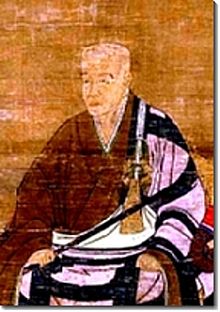 Zen Buddhist Eisai Myoan Zen Buddhist Eisai Myoan
Eureka Moment: luck favors the prepared mind
The in-depth answer would make you curioser and curioser as “Alice In Wonderland”. The discovery of Black tea is believed to be a fortunate accident. But then the accident wouldn’t have taken place at all, if not for the keen eye of the legendary botanist Shen Nong, emperor of China (2737-2699 BC).
Discovery of Black Tea was a Eureka moment as the accidental discovery of world’s first antibiotic, Penicillin thanks to the keen eye of the Scottish biologist Alexander Fleming (AD1881-1955) was. The legend has it a few leaves that had blown into a pot of water boiled for the emperor turned the boiled water from being colorless to a reddish tint. Having seen the coloration caused by the fresh green leaves of the nearby tree, ever the botanist, emperor pounced upon the chance of tasting the water to determine the qualities of the green leaf.
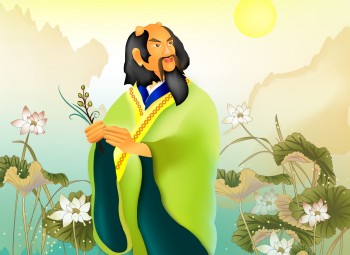 Shen Nong — the father of agriculture and medicine. Illustrated by Jessica Chang/ET staff, www.theepochtimes.com Shen Nong — the father of agriculture and medicine. Illustrated by Jessica Chang/ET staff, www.theepochtimes.com
Black tea by any other name would taste as sweet
Though the modern world is unable to ascertain to veracity of the legend, the green tea leaf that made a beverage of Red tea has since then become popular throughout the East & West. Though the beverage of tea unsweetened with milk is popularly called Black tea in the western word today, most possibly following the fashion of calling unsweetened coffee as black coffee, in Asia & especially in Africa & Middle East, it is called Red tea.
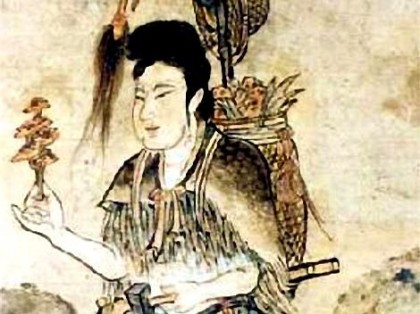
The world’s first botanist
History of China records that emperor Shen Nong discovered, tested, analyzed & recorded hundreds of herbs for the benefit of his nation & his land. He is credited with the title of “father of Chinese herbal medicine” as if the title of “discoverer of green tea leaf” wouldn’t do.

Shen Nong bencao jing [Shen Nong’s Classic of Root & Herb]
What’s in a Name?
Everything, your good name is everything. But then Shan Nong was a name like no other. Nobody could have been better named than Shan Nong meaning Divine Farmer. The Chinese methods in recognizing potential farmlands & cultivation are credited to Shan Nong. Harnessing resources, inventing the plough & yoking beasts too are believed to be introduced by the emperor. Then again the name Shan Nong is immortalized by the popularity of Tea, no matter how you call it, Black Tea, Red tea or Green tea.
Popularity of Black tea following the glorious name
Such a glorious name as Shan Nong wouldn’t be called in vain. Tea was set into the path of undying popularity by Shan Nong. According to the “Tea & Coffee Trade Journal” September 1, 1995, a professional journal, tea is the most widely consumed beverage in the world next to plain water.
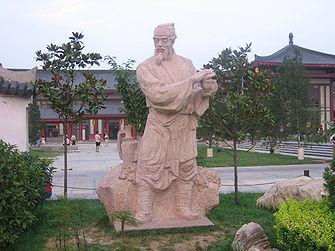 A statue of Lu Yu, the father of tea located in Xi'an, China First ever treatise on Black tea
The first treatise on Tea, “Tea Classic” was composed as far as back in 760 CE & 780 CE by a Chinese poet named Lu Yu. The treatise consisted of ten chapters tilted Origin, Tea Tools, Manufacture, Tea Wares, Brewing, Drinking Tea, Anecdotes, Places, Omission & Diagrams, The book was translated into English in 1974 (ISBN 0-316-53450-1).
First treatise on Black tea in Japan
The first treatise on Tea in Japan was inscribed by the founder of Zen Buddhism, Japanese Buddhist priest Myoan Eisai following his return from China where he studied philosophy & religion. Seno Tanaka, Sendo Tanaka & Edwin O. Reischauer in their book “The Tea Ceremony” published in year 2000 narrates: In January 1211 he wrote the first treatise on Tea in Japan, Kissa Yojoki or Tea Drinking Is Good for the Health, a small booklet of twenty pages in praise of Tea. In his short treatise Eisai, strongly recommended tea as a cure for five types of disease: loss of appetite, paralysis, beriberi & sickness from tainted water. Tea, he added, is a remedy for all disorders & this was perhaps the main reason for consequent popularity of tea-drinking.
 The Finest Black Tea in the World, Ceylon Tea of Sri Lanka The Finest Black Tea in the World:Ceylon Tea
The finest Black Tea of the world is Ceylon Tea produced in Sri Lanka. Sri Lanka Holidays Nuwara Eliya, the capital of Black Tea production of Sri Lanka is located at a height of 1800 meters above the sea level in the one & only mountain mass set right in the central zone of the drop pearl shaped tropical island of Sri Lanka. While the product of Black Tea in the Central Highlands of Sri Lanka is called high grown Ceylon Tea, the product of Black Tea from the southern zone surrounding Sri Lanka Holidays Galle of lower altitude, is called low grown Ceylon Tea.
Tags: Ceylon Tea, Sri Lanka Holidays
Posted in Sri Lanka Holidays, ~Ceylon Tea | No Comments »
November 30th, 2012
“Tea is the ultimate mental & medical remedy and has the ability to make one’s life more full and complete”
Zen Buddhist Eisai Myoan: How to Stay Healthy by Drinking Tea. (AD 1211)
Given the year, i.e. AD1211 in which the tea specialty book “How to Stay Healthy by Drinking Tea” was composed, one would wonder how far the history of tea runs into. The briefest answer to break you free of the contemplation is “very far, as far as the History of China itself” And the history of China runs into no less than 5000 years.
Eureka Moment: luck favors the prepared mind
When was tea discovered? The in-depth answer would make you curioser and curioser as “Alice In Wonderland”. The discovery of tea is believed to be a fortunate accident. But then the accident wouldn’t have taken place at all, if not for the keen eye of the legendary botanist Shen Nong, emperor of China (2737-2699 BC).
Discovery of tea was a Eureka moment as the accidental discovery of world’s first antibiotic, Penicillin thanks to the keen eye of the Scottish biologist Alexander Fleming (AD1881-1955) was. The legend has it a few leaves that had blown into a pot of water boiled for the emperor turned the boiled water from being colorless to a reddish tint. Having seen the coloration caused by the fresh green leaves of the nearby tree, ever the botanist, emperor pounced upon the chance of tasting the water to determine the qualities of the green leaf.
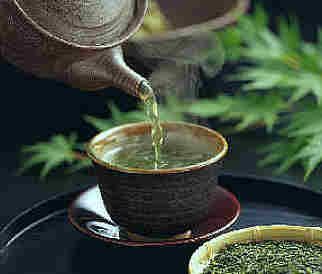
Tea by any other name would taste as sweet, as serene as Zen
Though the modern world is unable to ascertain to veracity of the legend, the green tea leaf that made a beverage of Red tea has since then become popular throughout the East & West. Though the beverage of tea unsweetened with milk is popularly called Black tea in the western word today, most possibly following the fashion of calling unsweetened coffee as black coffee, in Asia & especially in Africa & Middle East, it is called Red tea.
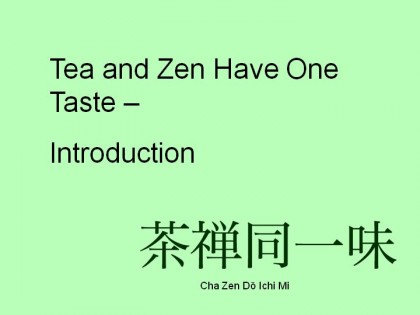
The world’s first botanist
History of China records that emperor Shen Nong discovered, tested, analyzed & recorded hundreds of herbs for the benefit of his nation & his land. He is credited with the title of “father of Chinese herbal medicine” as if the title of “discoverer of green tea leaf” wouldn’t do.
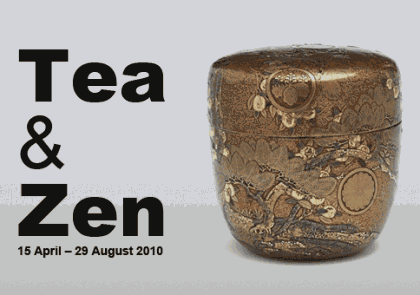
What’s in a name?
Everything, your good name is everything. But then Shan Nong was a name like no other. Nobody could have been better named than Shan Nong meaning Divine Farmer. The Chinese methods in recognizing potential farmlands & cultivation are credited to Shan Nong. Harnessing resources, inventing the plough & yoking beasts too are believed to be introduced by the emperor. Then again the name Shan Nong is immortalized by the popularity of Tea, no matter how you call it, Black tea, Red tea or Green tea. The finest black tea in the world is produced in Sri Lanka and has been marketed by the brand name of Ceylon Tea since the British Colonial era of Sri Lanka. The ancient drop pearl shaped tropical island of Sri Lanka was then known by the name Ceylon. Sri Lanka Holidays Nuwara Eliya, a colonial sanitarium, is the heart of the tea plantation zone of the Central Highlands. The Central Highlands, the one and only mountain mass of the Sri Lanka is accessed at Sri Lanka Holidays Kandy, a UNESCO World Heritage Site.
Popularity of tea following the glorious name
Such a glorious name as Shan Nong wouldn’t be called in vain. Tea was set into the path of undying popularity by Shan Nong. According to the “Tea & Coffee Trade Journal” September 1, 1995, a professional journal, tea is the most widely consumed beverage in the world next to plain water.
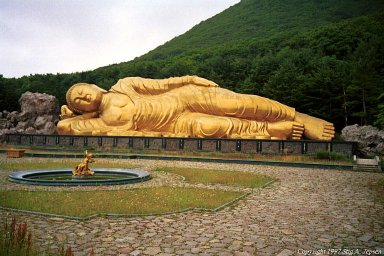
First ever treatise on tea
The first treatise on Tea, “Tea Classic” was composed as far as back in 760 CE & 780 CE by a Chinese poet named Lu Yu. The treatise consisted of ten chapters tilted Origin, Tea Tools, Manufacture, Tea Wares, Brewing, Drinking Tea, Anecdotes, Places, Omission & Diagrams, The book was translated into English in 1974 (ISBN 0-316-53450-1).
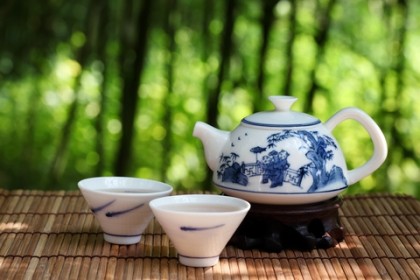
First treatise on tea in Japan
The first treatise on Tea in Japan was inscribed by the founder of Zen Buddhism, Japanese Buddhist priest Myoan Eisai following his return from China where he studied philosophy & religion. Seno Tanaka, Sendo Tanaka & Edwin O. Reischauer in their book “The Tea Ceremony” published in year 2000 narrates: In January 1211 he wrote the first treatise on Tea in Japan, Kissa Yojoki or Tea Drinking Is Good for the Health, a small booklet of twenty pages in praise of Tea. In his short treatise Eisai, strongly recommended tea as a cure for five types of disease: loss of appetite, paralysis, beriberi & sickness from tainted water. Tea, he added, is a remedy for all disorders & this was perhaps the main reason for consequent popularity of tea-drinking.

Zen Buddhism & Buddhism
Though Zen Buddhism has its origins in the ascetic practitioners of Buddhism, who found refuge in forests and mountains in India, it was in China, Zen Buddhism, a distinctive school of Mahayana Buddhism (the orthodox cannon of Buddhism is Theravada Buddhism) first took root following the arrival of Indian Buddhist monk Bodhidharma (470-543 AD) in the Shaolin Buddhist Monastery of Kung fu fame in China. Bodhidharma’s teachings tapped into some developments in the spiritual conceptions that were already on train, such as the confluence of philosophical Taoism with Buddhism. Such was the impact of Taoism upon Zen Buddhism, some sages and texts are owned by both religions. The early Mahayana philosophies of Madhyamika (2nd century AD) and Yogacara (3rd century AD) too were instrumental to great extent in the development of Zen Buddhism.
However, today Mahayana Buddhism is the primary form of Buddhism in North Asia and the Far East, including China, Japan, Korea, Tibet and Mongolia, and is thus sometimes known as Northern Buddhism while Theravada Buddhism sometimes called ‘Southern Buddhism’ held fast in Sri Lanka, Cambodia, Laos, Thailand and Myanmar.
Mahayana Buddhism accepts the Pali Canon as sacred scripture together with the Theravada Buddhism yet absorb many other Sutras or discourses which were written later in Sanskrit. It was in Sri Lanka in the 5th century AD during the reign of King Vatta Gamini Abhaya (the builder of Golden Dambulla Rock Cave Temple, today a UNESCO World Heritage Site) that 500 pious Theravada Buddhist monks assembled with Maha Thera Siva, as President of the Fourth Buddhist Council, in Sri Lanka Holidays Aloka-Vihara or Aluvihare rock cave monastery at the city of Matale, 12km north of Kandy (the gateway to Sri Lanka Holidays Central Highlands) committed to writing, for posterity, on ola leaves the Theravada cannon called Tripitaka, the three basket of the Teachings, known as the Pali scriptures, which had been handed down orally till then. It was at Aluvihare rock cave monastery, Buddhagosha, the 5th-century Theravada Buddhist commentator and scholar composed Visuddhimagga (Path of Purification), a comprehensive summary and analysis of the Theravada understanding of the Buddha’s path to liberation.
Tags: Ceylon Tea, Sri Lanka Holidays
Posted in ~Ceylon Tea | 1 Comment »
November 15th, 2012
The mere chink of cups and saucers turns the mind to happy repose.” George Gissie
As if the introduction of Black tea wouldn’t do, China introduced Porcelain to the world as well. As if having got the world addicted to Black tea, wouldn’t do, China brought in an aesthetic counterpart to the culture of drinking Black tea, lent class to complement the social habit: Porcelain. It was a case of classic addiction: addiction to Black Tea was complemented by the love for Porcelain.
But then again, it’s an addiction like no other. Black tea was far from a narcotic even to the medieval Doubting Thomases. Medical literature lends support in bounty to the numerous discussions all over the world that Black tea protects your health. Value of Black Tea as an herbal medicine has been recorded in history; its preventive capacity & remedial actions on numerous diseases ranging from cardiovascular diseases to cancer has been scientifically researched. With the search for a healthier lifestyle in a & sustainable environment having gained momentum, Black Tea has become more popular than ever in U S A.
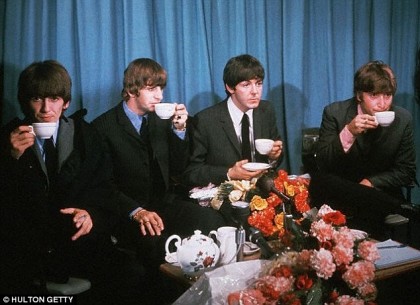 John Lennon, Paul MaCartney, George Harrison & Ringo Starr-The Beatles having Ceylon Tea, year 1965, U.K. John Lennon, Paul MaCartney, George Harrison & Ringo Starr-The Beatles having Ceylon Tea, year 1965, U.K.
Ceramics, Porcelain & China
The earliest ceramics were pottery objects made of clay, either by itself or mixed with other materials heat baked and cooled. Porcelain, the hardest of all ceramic products, is made by heat baking a blend of raw materials with kaolin, a clay material with a layered silicate mineral. Porcelain was first produced in China during the era of Tang Dynasty (AD 618-06). While China continued to produce ceramics throughout its glorious history, the rest of the great world being unable to produce ceramics products of such sophistication, in the 17th century, “porcelain from China” became known simply by the name “china”.
 Ceylon Tea from Sri Lanka, the Finest Black Tea in the World 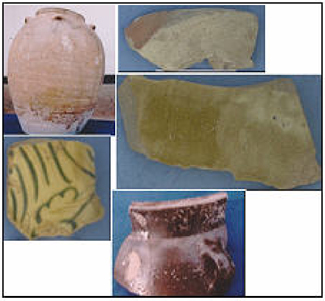 Tan Dynasty Chinse Pottery discovered in Anuradhapura, Sri Lanka Even today porcelain is frequently called by the name “china” in spite of finest porcelain being produced in Japan & high quality porcelain being produced all over the world. However the term “china” identifies only with tableware, i.e. cups, jugs, pots, plates, bowls & dishes made of soft paste or tender porcelain fired at lower temperature. The term “Porcelain” can be safely used for the medical & industrial applications of hard paste ceramic products fired at a higher temperature.
Earliest Chinese ceramics discovered in Sri Lanka
Sri Lanka being a central point in the ancient Asian maritime trade, bartering of goods in the island ports resulted in Chinese products being available in then capital of Sri Lanka, Anuradahpura (437 B.C – A.D.845). According to Priyantha Jayasingha & Wang Changsui (Department of Scientific history and archaeometry University of Science and Technology of China Hefei, Anhui, 230026 P.R. China and Archaeological Department, Colombo, Sri Lanka), the Chinese Ceramics discovered in Sri Lanka were produced during the era of Tang dynasty’s (A.D 618-906) of China. Chinese ceramics were discovered at Buddhist monasteries of Jetavanaramaya, Abahayagiriya and Mihintale of ancient Sri Lanka. Jetavanaramaya & Abahayagiriya located in the UNESCO World Heritage Site of Anuradhapura and Mihintale Rock Monastery are Sri Lanka Holidays tourist attractions: must visit cultural destinations in Sri Lanka. Modern Sri Lanka is the producer of finest Black Tea in the world: Ceylon Tea.
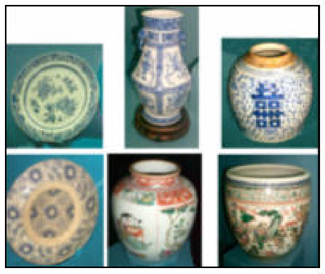 Tan Dynasty Chinese Porcelain found in Anuradhapura, Sri Lanka European Royalists & nobles lay hands on exotic Porcelain in the 14th century
It was not until the 14th century, Europe witnessed Porcelain. Porcelain of China arrived by way of overland path “Silk Road”, the most enduring trade route in human history & then by medieval maritime sea routes of Greece & Italy. A gift of chest of Chinese Porcelain from Sultan of Egypt to “Lorenzo de Medici” of Florence in the late 15th century was one of the shipments recorded in European history. But then again, in Europe, Porcelain of China was to remain an exotic commodity among the Royalists & nobles.
Discovery of exotic Porcelain by an act of piracy causes a sensation in Holland
In 1602 at St. Helena, South Atlantic Ocean and then again at 1603 at Johore, Malaysia, Dutch East India Company (VOC) captured two Portuguese vessels then called Carracks: St Fago valued at 1.5 Dutch guilders & St. Catarina valued at an amazing sum of 4 million Dutch guilders. Carracks were the first European ships that could weather the stormy seas in long voyages with heavily laden cargoes. The two Portuguese Carracks had Chinese Porcelain stowed in the holds to act as ballast against the main cargo of Black tea from China, spices & Chinese silk.
Import of Chinese Porcelain & imitations by the Europeans
Quote K. N. Chaudhuri: The import of Chinese porcelain during the seventeenth & eighteenth centuries was the cultural & aesthetic counterpart of the new social habits associated with the consumption of Black Tea, coffee, & chocolate in Europe. In the logistics of the East India Company’s ride with China, it had of course a humbler function. Chinaware packed in rice straw had no smell & it was an ideal complementary cargo to go with Black tea. Chests loaded with porcelain were extremely heavy & provided the necessary ballast for the ships.
The spectacular beauty of the late products from the kiln of Ching-te Chen & Teehua aroused as much admiration in the West as did the textile paintings of India a century earlier. Moreover, the rapid development of the porcelain industry in England, Holland, France, & Germany probably owed a great deal to the demonstration & substitution effect of the Chinese imports. The potters of Delft specialized in imitating the blue-& white ware of the K’ang-his period, & Bottger of Meissen, the inventor of porcelain in Europe, was the first to copy the superb white pieces from Tehua known as blanc de Chine. Bottger’s most famous imitations are dated from about 1715, & from the middle years of the century the great porcelain factories of Vienna, St Cloud, Mennecy, Chelsea & Bow were all striving to produce chinaware is the best tradition of the oriental imports. Unquote K. N. Chaudhuri: The Trading World of Asia and the English East India Company: 1660-1760.
 British Boy band One Direction -Niall Horan, 18, Zayn Malik, 19, Liam Payne, Louis Tomlinson and Harry Styles, 18, enjoying a cup of Ceylon Tea in Toronoto, year 2012 British Boy band One Direction -Niall Horan, 18, Zayn Malik, 19, Liam Payne, Louis Tomlinson and Harry Styles, 18, enjoying a cup of Ceylon Tea in Toronoto, year 2012
In search of harmony of Black Tea with porcelain
Black tea has been a prime feature in Chinese culture for millenniums. Chinese Legends & lore steeped in Black Tea are bountiful. Chinese elevated the habit of drinking Black Tea into a feature of culture called “Cha dao”, which was refined into an art form by the Japanese. None of the tea ceremonies or rituals and customs associated with tea drinking in Japan would have been elevated to such sophistication if not for the delicate cups, bowls & pots made of Porcelain from China. Since the eighteenth century, popularity of chinaware in Europe was to make a significant impact on popularizing the beverage of Black Tea.
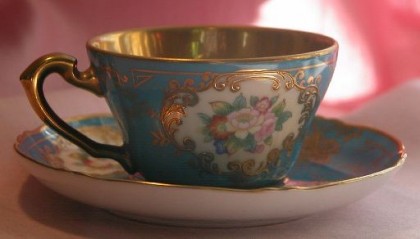 Noritake-Gold-Turquoise-Blue-Hand-Painted-Porcelain-Tea-Cup Buy Ceylon Tea and Noritake Porcelain in Sri Lanka
Ceylon Tea, the finest Black Tea in the world as well as World Class Modern Porcelain produced in Sri Lanka can be purchased at CMB Colombo Bandaranayake International Airport at Katunayake, Negombo, Sri Lanka.
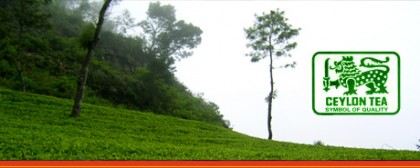 Ceylon Tea, the Finest Black Tea in the World Special features of Noritake Porcelain produced in Sri Lanka are:-
Very high whiteness – 90%; High translucency – 0.12%; High Thermal shock resistance – 180 c; Body is completely vitreous; High temperature fired – 1270c; High scratch resistance; Resistant to acid and alkalis
Maintenance of all these features made possible by the facts that product designing, selection and processing of raw materials, processing of printing materials such as pigment and gold, silk printing screens are all done within Noritake enterprise.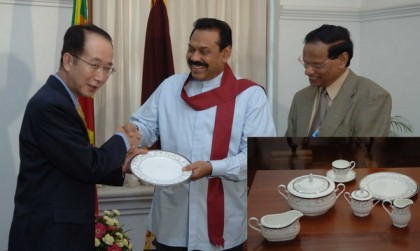
Noritake Porcelain, originating in a village of the same name near Nagoya in Japan, has been an A-lister ever since it hit the US market a little over 100 years ago. Cleverly appealing to both the mass market and the high end with a technologically superior and diverse product range, Noritake Porcelain has been a favourite with homes, hotel chains and airlines for its delicate designs and durable quality.
The porcelain producing factory of Noritake Lanka Porcelain Private Limited is located in Matale, home to ancient Aluvihare Rock Temple, 20 km north of Sri Lanka Holidays attraction of medieval city of Kandy, a UNESCO World Heritage Site. Matale is also home to Sri Lanka’s rich minerals such as quartz, feldspar and dolomite deposits.
Tags: Ceylon Tea, Porcelain, Sri Lanka Holidays
Posted in ~Ceylon Tea | No Comments »
November 12th, 2012
Two main forms of Black tea in consumption
High quality loose leaf Black Tea packed in metal containers comes in two forms: pure teas & blended teas. Paper sachets of Black tea, popularly called tea bags (one bag for cup) packed in light cardboard cartons aren’t for those who love high quality Black tea.
Blended Black tea
Blended Black tea is precisely what the name carries with it: a blend of Black teas grown & manufactured in different areas of the world. Low quality Kenyan Black tea is often blended with Ceylon Tea, the finest tea in the world. If you go for high quality stuff in life, such blends aren’t what you would enjoy.
Then again there are high quality blended Black Teas marketed by the blenders by blending Black teas from Sri Lanka (Ceylon Tea-finest tea in the world) & Assam of India. Assam of India produces high quality Black Tea too. You would definitely go for the blend of Ceylon Tea from Sri Lanka Holidays should you love the finest stuff under the sun.
Pure Black Tea
Pure Black tea is plucked in the same country. Then again, you could have a tin container of Pure Ceylon Tea with its metal printed label indicating it’s a blend. Very true, that’s definitely a blend, but with the unmistakable Lion logo of Ceylon tea, there’s no need for you to get upset. You have just bought a blend of Ceylon Tea grown and manufactured in different parts of the island of Sri Lanka exclusively. You are someone who would go for nothing less than The Real McCoy.
Blended Ceylon Tea brings off the best in the distinctive flavors & aromas of all the teas involved in the blend. The concept would a ring a bell: Blended Scotch Whisky.
 Tea Factory Hotel, Nuwara Eliya Black Tea branding by the region of origin
Flavor, aroma & quality of Black Teas, as in the case of wine, vary on the climatic & geographic conditions of the area of cultivation. Pure Ceylon Teas grown & manufactured at different elevations in the beautiful tropical island of Sri Lanka are called after the area: Nuwara Eliya (2000 meters above sea level), Dimbula (1200-1700m), Uva (1000-1700m), Uda Pussellawa (1200m), Kandy (650-1300 m) of Central Highlands of Sri Lanka and Ruhuna (sea level to 600m) each have its own distinctive taste & aroma.
Among the varieties of Black tea from all tea producing countries, quality & popularity of Ceylon Tea from Nuwara Eliya, Sri Lanka is akin to the standing of Champagne among wine.
High quality Black teas are grown & manufactured in Indian provinces of Darjeeling, Assam, and Nilgiri too are known by their respective provinces of cultivation & manufacture.
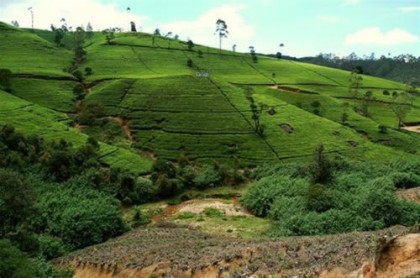 Nuwara Eliya, Sri Lanka High Grown Ceylon Tea, Medium Grown Ceylon Tea & Low Grown Ceylon Tea from Sri Lanka
Sri Lanka’s tea plantations are mainly located in the Central Highlands of the island stretching from Kandy of Mediterranean climate to Nuwara Eliya of salubrious climate. Black tea is grown in Ruhuna of Sri Lanka too. Dimbula, Uva, Nuwara Eliya & Uda Pussellawa of higher altitude produce High Grown Ceylon Teas of Sri Lanka. While Black Tea produced in Kandy is called Middle Grown Ceylon Tea, Black tea produced in Ruhuna is called Low Grown CeylonTea.
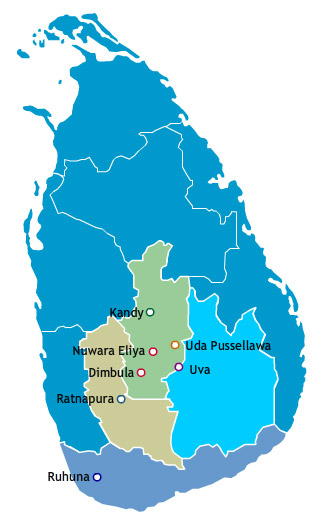 Ceylon Tea Growing Areas Of Sri Lanka Ceylon Tea:The Finest Tea in the World- Black Tea to suit every pallet
Sri Lanka’s production of varieties of Black teas to go with every pallet has been the hallmark of Ceylon Tea, the Black Ttea industry of Sri Lanka. Dimbula & Nuwara Eliya teas are sought after by blenders from all over the world; Uva Black teas too are used for high quality blends mainly in West Germany & Japan; medium grown Ceylon Tea is popular in Europe, Australia, Japan & North America; low grown Ceylon Tea from Sri Lanka is popular in Western Asia & Middle Eastern countries.
Black Tea from India
The main areas of Black tea cultivation in India are Darjeeling, Assam & Nilgiri. Black teas produced in these areas vary with one another in terms of aroma & flavor. In India Black tea is also grown in Arunachal Pradesh, Uttaranchal, Sikkim, Orissa, Bihar, Nagaland, Mizoram & Meghalaya Tripura, Manipur Dooars and Terai of West Bengal.
Black Tea gradings By the processing method
The main products of evergreen tea plant (Camellia sinensis) are fermented (black tea), producing an amber-colored, full-flavored beverage without bitterness; semi-fermented (oolong), a slightly bitter, light brownish-green beverage; and unfermented (green tea) a mild, slightly bitter, pale greenish-yellow beverage.
Black tea gradings by the size of leaf processed by orthodox method as well as CTC (crush, tear & curl) method
Teas are also classified by the size of the processed leaf. Orthodox manufacturing method as well as CTC manufacturing method produces larger leafy grades and smaller broken grades. These grading terms are usually used for teas from Sri Lanka & India. The system is based solely upon the size of the processed and dried Black Tea leaves. The size of the processed Black tea leaves is determined by the means of sifting teas on wire meshes.
Orange Pekoe (O.P) is the main grade in tea production. Orange Pekoe consists of long wiry leaf with tips (buds). The High Grown Orange Pekoe consists of long, thin & wiry leaves containing tip or bud.
Broken Orange Pekoe (B.O.P) with superior color & flavor consists of smaller leaf & tip.
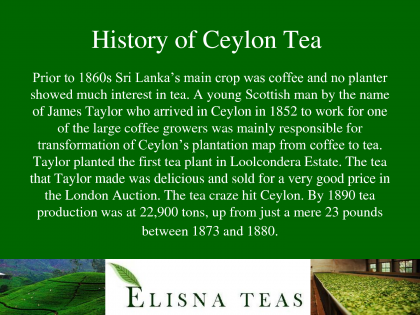 Ceylon Tea From Sri Lanka Pekoe Fannings which are smaller than B.O.P. brew quickly & give a liquor of good color when the beverage is prepared.
Dust, the black tea with smallest particles is very useful for quick brewing. The liquor produced by the Dust gives strength as well as color.
Tags: Black Tea, Central Highlands, Ceylon Tea, Nuwara Eliya, Sri Lanka Holidays
Posted in ~Ceylon Tea | No Comments »
November 1st, 2012
Hyatt Regency Colombo
Hyatt Hotels Corporation (NYSE: H) announced [October 18, 2012 ] that a Hyatt affiliate has entered into a management agreement with Sinolanka Hotels and Spa Private Limited for a Hyatt Regency hotel in Colombo, Sri Lanka. Hyatt Regency Colombo will be the first Hyatt-branded hotel in Sri Lanka.
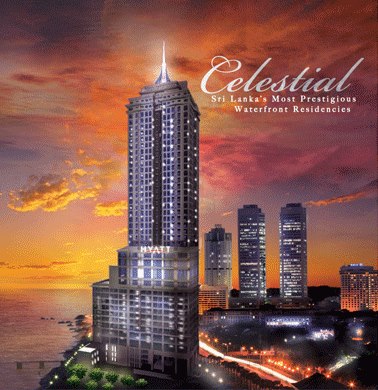
“Sri Lanka continues to be a growing market, and we are excited to work with Sinolanka on this iconic project in Colombo,” said Ratnesh Verma, Senior Vice President – Real Estate and Development, Asia Pacific for Hyatt Hotels & Resorts. “Establishing our brand’s presence in key gateway cities like Colombo is an integral part of our strategy to drive preference for the Hyatt brand in the South Asian region. We believe the hotel’s excellent location and full range of services and dining options will meet the needs of both business and leisure travelers. It is our privilege to work with Sinolanka and be part of the government’s initiatives to develop tourism infrastructure in Sri Lanka.”
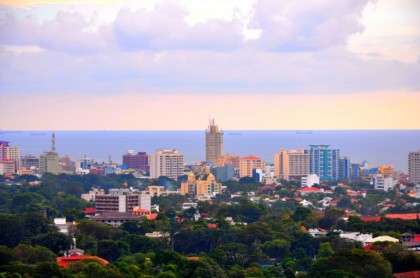
“We are pleased to work with Hyatt on the first Hyatt-branded hotel in Sri Lanka,” said Gamini Senarath, Chairman of Sinolanka Hotels and Spa Private Limited. “Hyatt RegencyColombo is expected to be a flagship development for Sri Lanka, demonstrating the rapidly expanding opportunities in this country’s tourism sector.”
Expected to open in 2014, Hyatt Regency Colombo will be a 42-floor hotel on Galle Road, which is one of the arterial roads in the central business district (CBD) area. The hotel will feature 475 guestrooms and 84 serviced apartments, as well as a lobby lounge, an all-day dining, multi-cuisine restaurant, three specialty restaurants, a bar, eight spa treatment rooms, a fitness center, a swimming pool, and a Regency Club lounge. Additionally, the hotel will offer more than 17,000 sq ft (1,579 sq m) of enclosed meeting space, including a 7,500 sq ft (696 sq m) ballroom.
Tags: Luxury Hotels, Sri Lanka Holidays
Posted in Colombo | No Comments »
September 24th, 2012
Location of Viventa by Taj-Bentota
Viventa by Taj-Bentota (formerly Taj Exotica) is located at the National Holiday Resort in Bentota, the foremost beach holiday resort in Sri Lanka. Bentota, 64km south of Colombo can be reached within two and a half drive from Colombo, the capital city of Sri Lanka. Bentota is the beach immediately next to the pristine bay beach at Beruwela, 56 km from Colombo that signal the beginning of a 130 Km-long stretch of golden beaches of Sri Lanka Holidays south-western and southern coastal belts.

Setting of Viventa by Taj-Bentota
Viventa by Taj-Bentota of extensive landscaped gardens is built upon a rocky head land that brings about panoramic views of the long stretch of Bentota beach contained within Bentota National Holiday Resort. National Holiday Resort in Bentota, a strip of land sandwiched between the beach and railway line to the west and Galle Road (A2 main motorway to the east) is a self contained beach resort: Bentota Beach Hotel, Serendib Hotel, Surf Bentota Hotel, Viventa by Taj, post office, shopping arcade, a cafeteria, open-air theatre where folk and mask dancing performances are staged regularly.
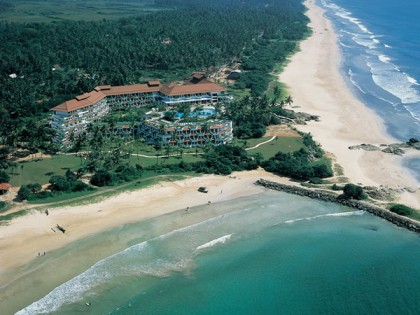
Sri Lanka Holidays Sustainable tourism (Green i.e., eco) credentials of Viventa by Taj- Bentota: To be edited
Type of hotel & star rating
Viventa by Taj-Bentota is a 5 star luxury hotel that offers luxurious facilities. Refurbished in the year 2012, the beach hotel is owned and managed by Taj Group of India.
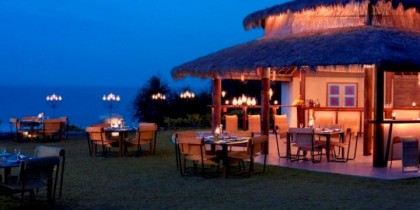
Architecture and Interior Décor of Viventa by Taj-Bentota
Viventa by Taj is built in the colonial architectural style of Sri Lanka. Interior of the hotel with high ceilings and wooden pillars are well furnished.
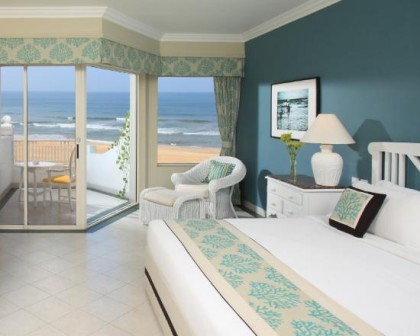
Accomodation at Viventa by Taj-Bentota
Viventa of Taj consists of 162 air-conditioned rooms. All three types of rooms, i.e. Standard, Deluxe and Superior Rooms have en-suite bathrooms with hot and cold water showers and hairdryers. The Deluxe and Superior Sea View Rooms set up with lounge area are more spacious than the standard rooms.
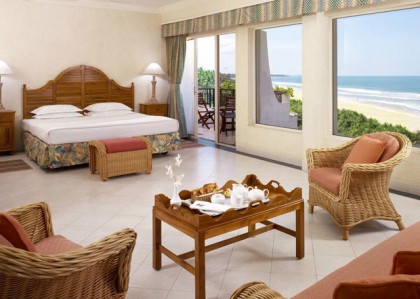
In-room facilities at Viventa by Taj-Bentota
In-room facilities include mini-bar, phone, satellite TV, electronic safe, tea / coffee facilities and 24-hour room service.
In house facilities at Viventa by Taj-Bentota: dining
Palm’s Coffee Shop: Sri Lankan and international buffets, Oriental Pavillion specializing in Chinese cuisine
Sea View Restaurant: fresh seafood dishes and continental cuisine
Sea Lounge Bar: by afternoon; high tea and by night: drinks and cocktails,
Aquarius pool bar: fresh juices and snacks
In house facilities at Viventa by Taj-Bentota: leisure and recreation
Large swimming pool with children’s pool
Beach volleyball, badminton court
Billiards, table tennis and other indoor games
Beauty Salon, Gift Shop, Library
Night club, regular evening entertainment
In house facilities at Viventa by Taj-Bentota
Conferences, ceremonies and weddings
Weddings: the hotel is also well organized to hold weddings and will plan your entire wedding day from a traditional Sri Lankan ceremony to the reception
In house facilities at Viventa by Taj-Bentota: Fitness center
Sauna, Jacuzzi and gymnasium
Fitness center, which is open 24 hours has an instructor from 7 in the morning to 8 in the evening. The center is fully equipped with cardio machines, multi gym machine, treadmills, cross trainer, exercise cycles, free weights, and exercise ball.
In house facilities at Viventa by Taj-Bentota
Babysitting, with 24 hours prior notification, Doctor-on-call
Currency exchange, Postal & Parcel Services, Airport transfers
Car rentals, Restaurant bookings, Local errands – shopping/medicines/telecommunication etc.
Banquet and Meeting Room facilities at Viventa by Taj-Bentota
Indoor: Orchid and Boardroom
Space: 6500 square feet of conference space
Capacity: Theatre style – 275 guests; Classroom style – 160 guests; U-shape – 70 guests; Boardroom – 24 Guests; Cocktails – 350 guests standing
Audio Video facilities: includes wall mounted, high-powered cube speakers and sub woofers powered by independent amplifiers mounted on moveable racks. Microphones, mood lighting and manually controlled remote controlled, pull-down screens and floor-concealed, audio/visual switch boxes,(Has to be hired out at a extra cost) all ensure that Vivanta by Taj – Bentota provides hosts with the latest and greatest technology that they can operate via a control panel for perfect adjustments during the event.
Boardroom is another indoor meeting center that suits for small meetings
Capacity: theatre style – 35 guests; classroom style – 18 guests; U-shape – 20 guests; cocktails – 30 guests standing
Outdoor: banquet lawn & Sea View Terrace
Banquet lawn is an open air venue well suited for for cocktails, dinners, launch parties and social celebrations.
Sea View Terrace, smaller than banquet lawn is Ideal for cocktails, dinners, launch parties and social celebrations.
Capacity: Cocktails – 250-300 guests
Excursions off Viventa by Taj-Bentota
Brief Gardens designed and developed by the landscape artist Bevis Bawa is a 200-acre landscaped garden that combine elaborate European layout with tropical wilderness.
Galpata Buddhist temple, as the protected lithic inscription therein reveals, was built by King Parakramabahu the Great who reigned in Sri Lanka Holidays Polonnaruwa in the 13th century.
Kosgoda tea turtle Project to learn of conservation of marine turtle and to release a freshly hatched three-day old turtle into the ocean.
Tags: Beach Hotels, Bentota, Sri Lanka Holidays
Posted in BeachMaster, Bentota, Sri Lanka Holidays | No Comments »
September 23rd, 2012
Location of Mosvold Villa
Mosvold Villa by Jetwing is located on the coconut palm fringed tropical beach of Ahangama, a fishing village situated 130km south of Colombo, midway between the loveliest beaches of Koggala (to the north) and Mirissa (to the south) of the south-western coastal belt of Sri Lanka. The stretch of the coast in Ahangama is famous for the stilt fisherman, sitting tight on a wooden wedge fixed onto a wooden pole driven into the sea bed, angling on the beach with all the time in the world, while the waves carrying small fish crash onto the shore. In between Ahangama beach and Mirissa beach (off- shore dolphin and whale watching) are the surfing beach of Midigama and bay beach of Weligama.
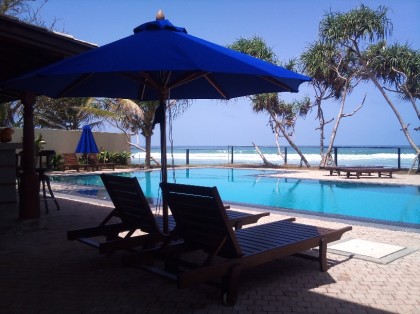
Setting of Mosvold Villa by Jetwing
Mosvold villa is a beachfront boutique hotel. The well maintained hotel garden of grassy lawns is well shaded by Coconut Palm trees and Mangrove trees. Lining the beachfront of the swimming pool is a row of mangrove trees that filter in the tropical sun onto the sundeck.
Sri Lanka Holidays Sustainable tourism (Green i.e. eco) credentials of Mosvold Villa by Jetwing: to be edited.
The type of the hotel: Mosvold Villa is a luxury boutique villa of six rooms
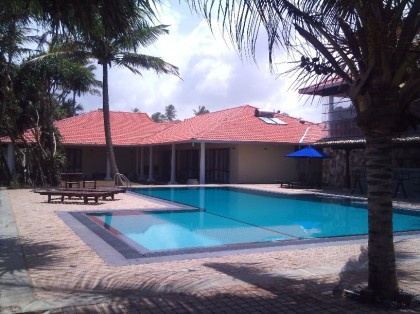
Architecture and décor of Mosvold Villa
Mosvold Villa’s architecture is based on traditional concepts suited to the tropical island of Sri Lanka: space, natural light and air circulation. The courtyards within the building and long verandahs feed in natural light and breeze into the rooms.
White clad rooms are tastefully furnished with traditional furniture polished dark tan: four poster bed, wardrobe, sofa, chairs and desk mad of tropical hardwood.
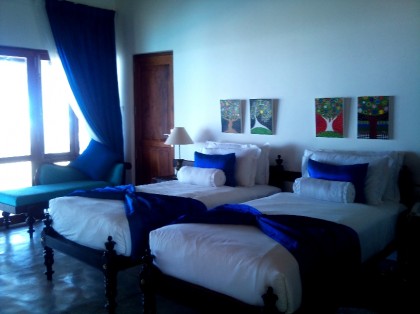
Accomodation at Mosvold Villa by Jetwing
All six luxury rooms of Mosvold Villa are built facing the beach. The 6 air-conditioned rooms are provided with en-suite shower and bath, mini-bar, television, wardrobe & tea-coffee making facilities.
While Wi-Fi internet connection is available free of charge IDD is chargeable.
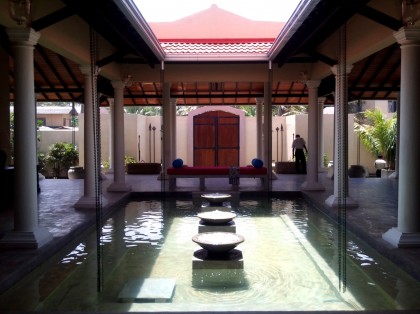
In-house facilities at Mosvold by Jetwing
Swimming pool facing the beach.
Lost and found service (24 hours), Wedding services (on request), Private events (on request)
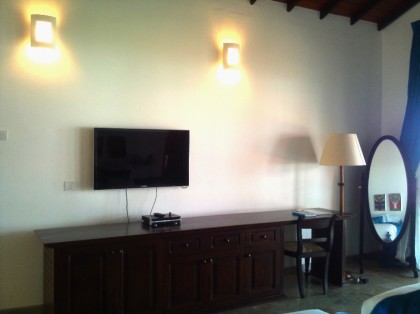
Half Day Excursion off Mosvold by Jetwing
Boat Safari in the Koggala Lake at Sri Lanka Holidays Koggala. Kogglala Lake (6km north of Ahangama) splattered with patches of mangroves rich in birdlife.
Kataluwa Purvarama Mahavihara Buddhist temple 5km beyond Koggala showcases panels of Kandyan-style (a school of mural that emerged and developed in the era when Kandy was the capital city of Sri Lanka (1592-1815) wall paintings in the main shrine of the Buddhist temple.
Rumassla Rock (17km north of Ahangama), a sanctuary of Sri Lanka’s birds affords panoramic views of the Unawatuna Bay Beach.
Sri Lanka Holidays VOC Galle Dutch Fort, today, a UNESCO World Heritage Site (20km north of Ahangama) is situated on a small peninsula like headland overlooking the ocean.
Kottawa Forest Reserve (19km northeast of Galle), a 15-hectare Sri Lanka Holidays Arboretum is rich in biodiversity: 170 tree species with 100 of them being endemic to the island. Kottawa Forest Reserve is home to 70 species of birds including 12 endemic birds of Sri Lanka Holidays.
Tags: Beach Hotels, Boutique Hotels, Holidays
Posted in Ahangama, Beach, BeachBoutique | No Comments »
September 17th, 2012
Location of Avani Bentota Resort & Spa
Avani Bentota (Formerly Hotel Serendib, Bentota) is located at Sri Lanka’s most popular beach resort of Bentota in the south-western costal belt, where the tourist season begins in October and goes on till April. Bentota is 64km south of Colombo & can be reached by main southern coastal motorway called Galle Road that runs form Colombo to Sri Lanka Holidays Matara. The distance from Colombo CMB Bandaranayake International Airport to Avanti Bentota is 96 kms.
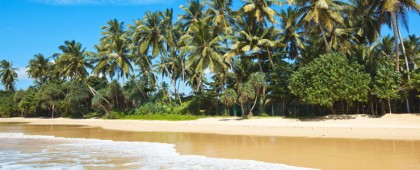
Setting of Avani Bentota Resort & Spa
Avani Bentota is a beach front . The stretch of broad sandy beach at Avani Bentota offers grand opportunities enjoy the tourist season with swimming, wind surfing ,water skiing, jest skiing and snorkeling.
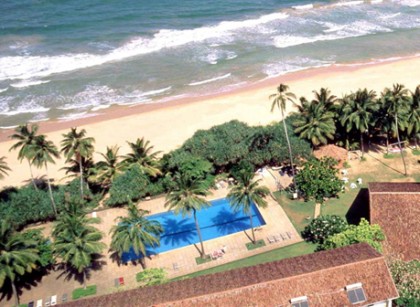
Sri Lanka Holidays Sustainable tourism (Green i.e., eco) credentials of Avani Bentota Resort & Spa: To be edited
Accomodation at Avani Bentota Resort & Spa
Avanti Bentota consists of 60 Superior rooms, 13 Deluxe rooms and 2 luxurious suites. All rooms are set up with its own private balcony or terrace. All 75 rooms are air conditioned, provided with DVD player, cable TV and completed with en-suite bathrooms-hot water and cold water.
Each and every superior room offers its own private terrace.
Superior rooms are provided with Hot/Cold water rain shower, Telephone, Mini Bar, Hair dryer, In-room safe and Tea & coffee maker
Spacious Deluxe rooms are built with their own guest patios.
Deluxe rooms are provided with Hot/Cold water with rain shower and bath tub, Telephone, Mini Bar, Hair dryer, In-room safe, Tea & coffee maker and Dressing area.
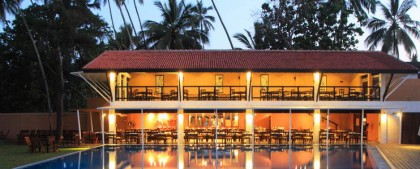
Facilities at Avani Bentota Resort & Spa
Dining
Breeze, a buffet style restaurant and Frangipani, a fine dining restaurant at Avani Bentota serves Sri Lankan and International cuisines and seafood specialty dishes.
In-house facilities at Avani Bentota Resort & Spa
Conference facilities, business center with wi-fi internet
24 hour room service and laundry service
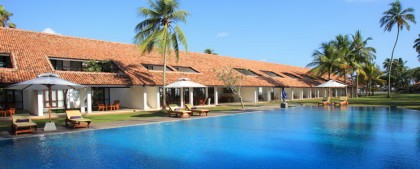
Leisure and recreations at Avani Bentota Resort & Spa
Fully equipped gym, two fresh water swimming pools, a separate children pool
The garden spa offers an array of beauty treatments and soothing massages
Beach Volleyball, water sports
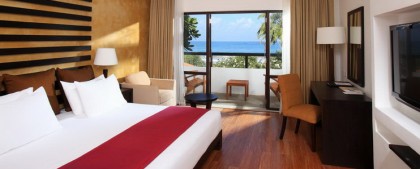
Excursions off Avani Bentota Resort & Spa
Set sail in a fishing expedition in a catamaran boat with the local fisherman at Sri Lanka Holidays Bentota
Visit the coconut palm sap tapping climbers early in the morning to enjoy the sight of them walk across tight ropes from one coconut palm tree to another, all round, to reach each and every coconut frond up in the trees and sap the juice. By the evening the coconut palm juice from the coconut fronds poured into clay pots ferment into a cider like alcoholic drink locally called Ra or Toddy.
Enjoy a boat safari along the tranquil River Madu ganga, a Ramsar Wetland, past quaint rural villages and en route visit the local markets, temples & craft and antique shops.
Enjoy landscape gardening in its most exotic form at Lunuganga, a life-long nature and sculpture project envisioned, launched and brought about to a fascinating nature attraction by Geoffrey Bawa, Sri Lanka’s foremost modern architect.
Visit Ariyapala Mask Museum at Sri Lanka Holidays Ambalangoda, the fishing village renowned for its folk masks carved of Balsa like lightweight Kaduru wood (Nux vomica). Folk mask dancing shows are held at Ariyapala Mask Museum on regular basis.
Tags: Beach s, Bentota, Sri Lanka Holidays
Posted in Beach, Bentota | No Comments »
|
 |
|
 |
|





























































 Learn CPR and save a LIFE
Learn first-aid and save a LIMB
Learn CPR and save a LIFE
Learn first-aid and save a LIMB
